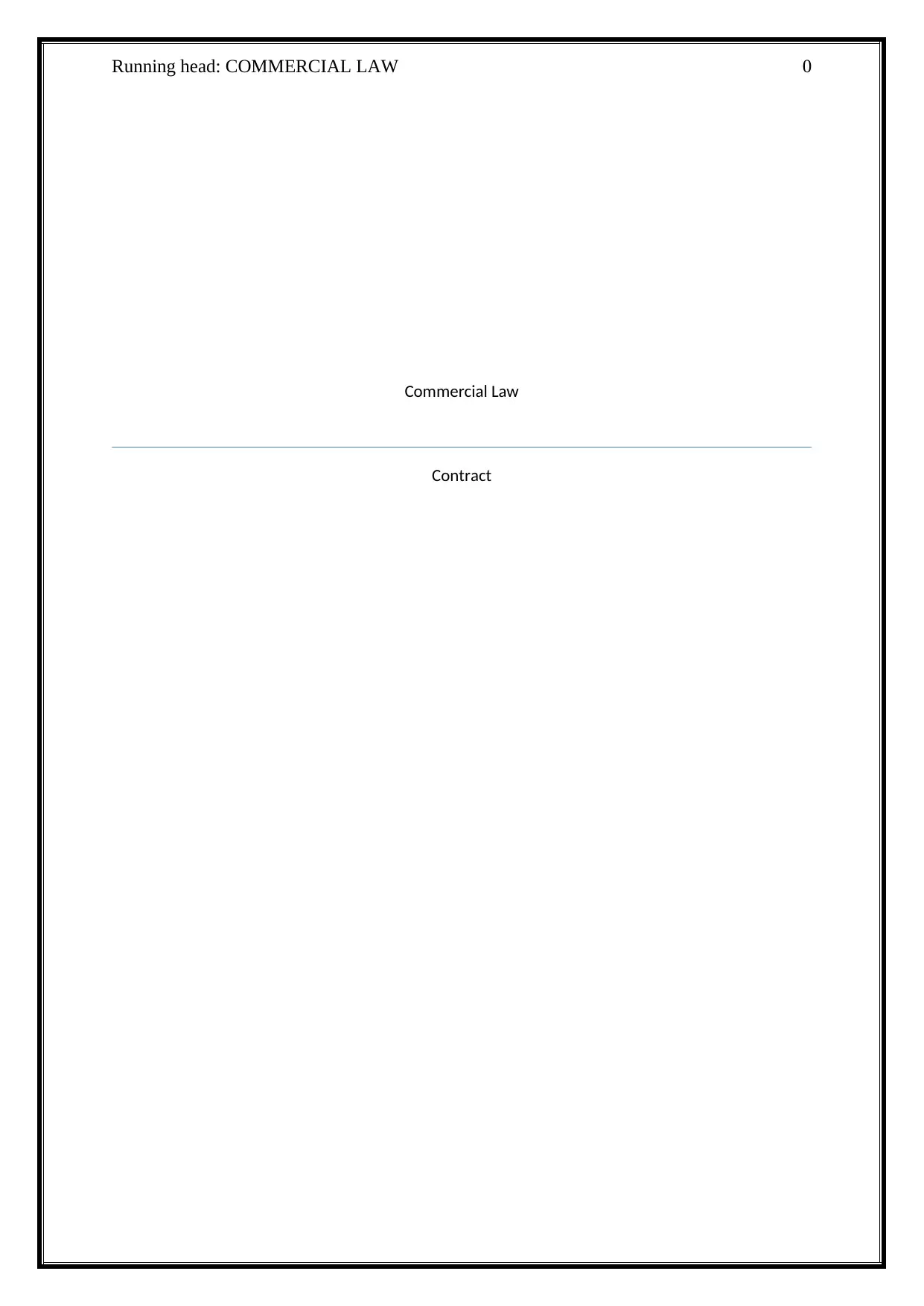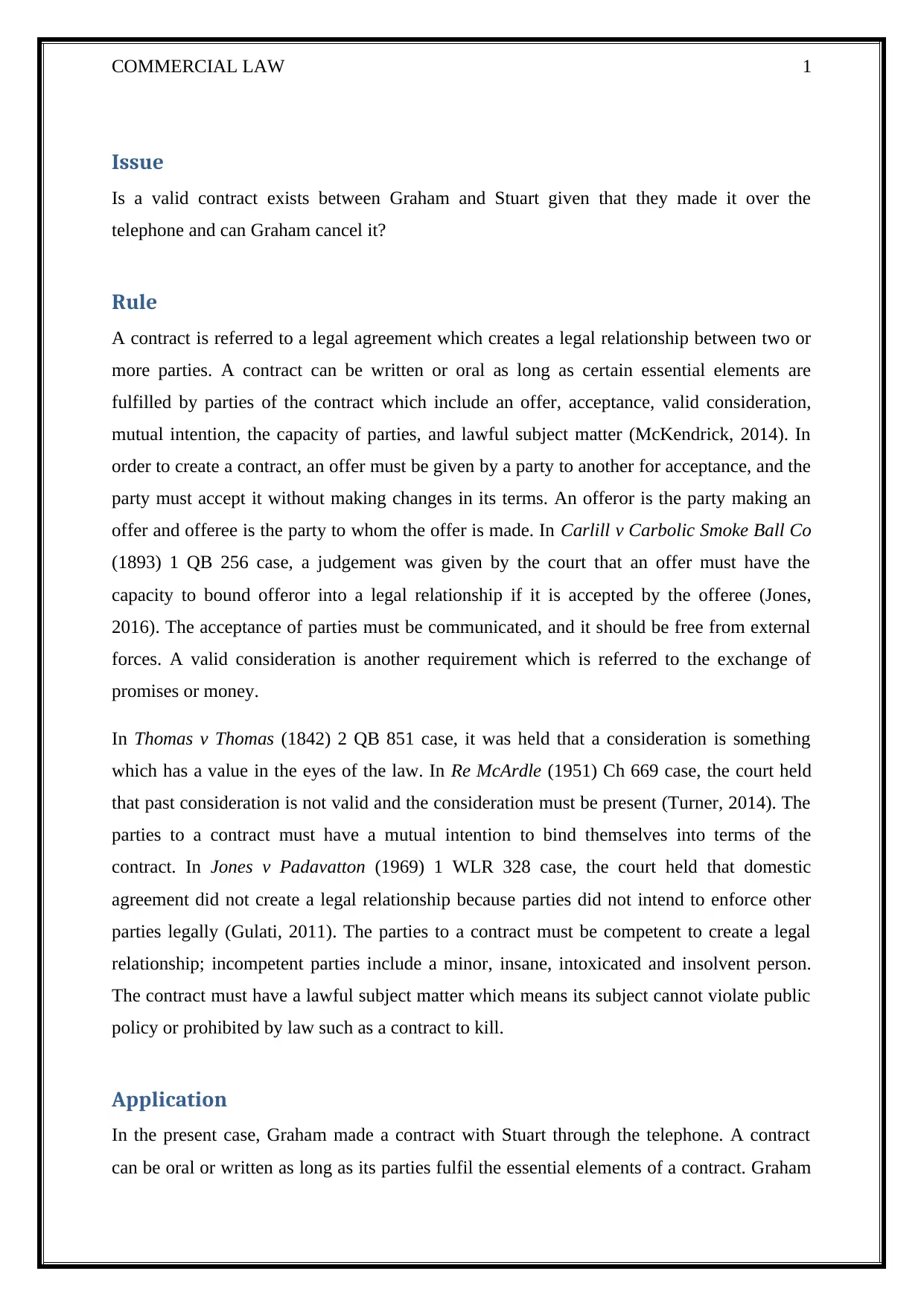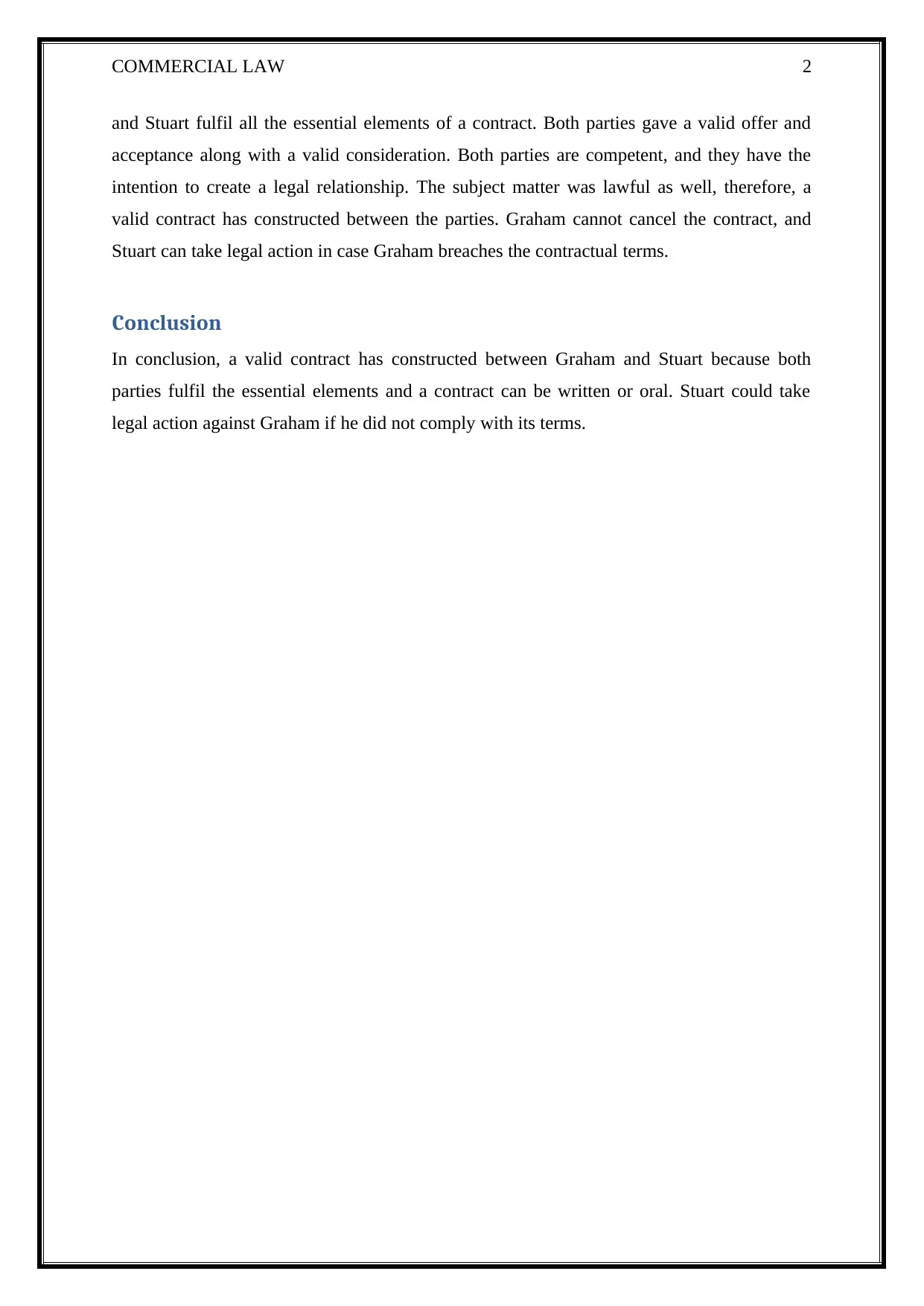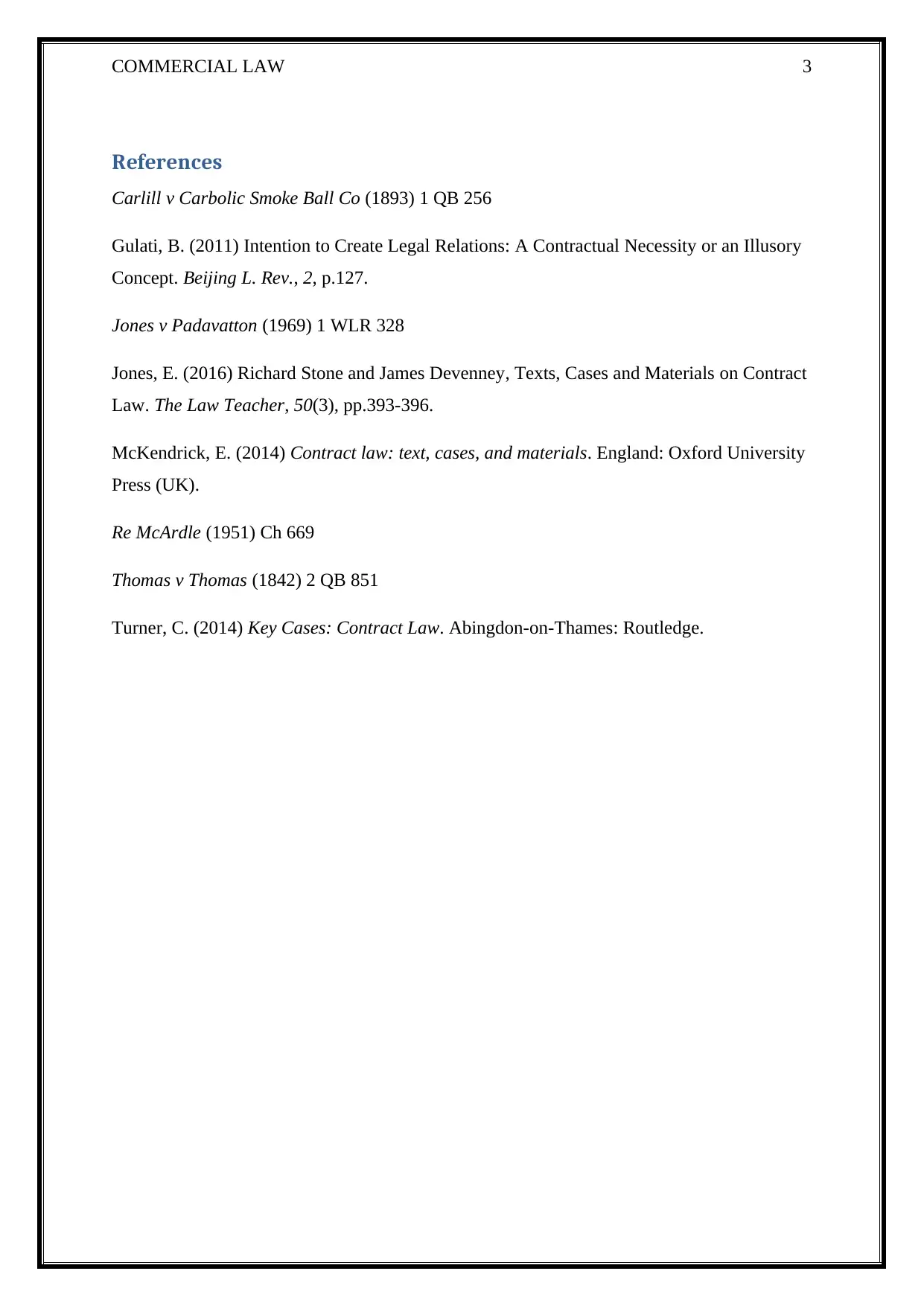Commercial Law: Contract Law Analysis of Graham and Stuart's Agreement
VerifiedAdded on 2021/06/17
|4
|720
|32
Homework Assignment
AI Summary
This assignment analyzes a commercial law contract between Graham and Stuart, formed over the telephone. The analysis centers on whether a valid contract exists, considering the essential elements: offer, acceptance, consideration, mutual intention, capacity of parties, and lawful subject matter. The document references key legal cases such as Carlill v Carbolic Smoke Ball Co, Thomas v Thomas, and Jones v Padavatton to support its arguments. It concludes that a valid contract was formed, fulfilling all essential elements, and therefore, Graham cannot cancel the contract. The assignment provides a clear understanding of contract law principles and their application in a real-world scenario, demonstrating the requirements for a legally binding agreement and the consequences of breach.
1 out of 4










![[object Object]](/_next/static/media/star-bottom.7253800d.svg)